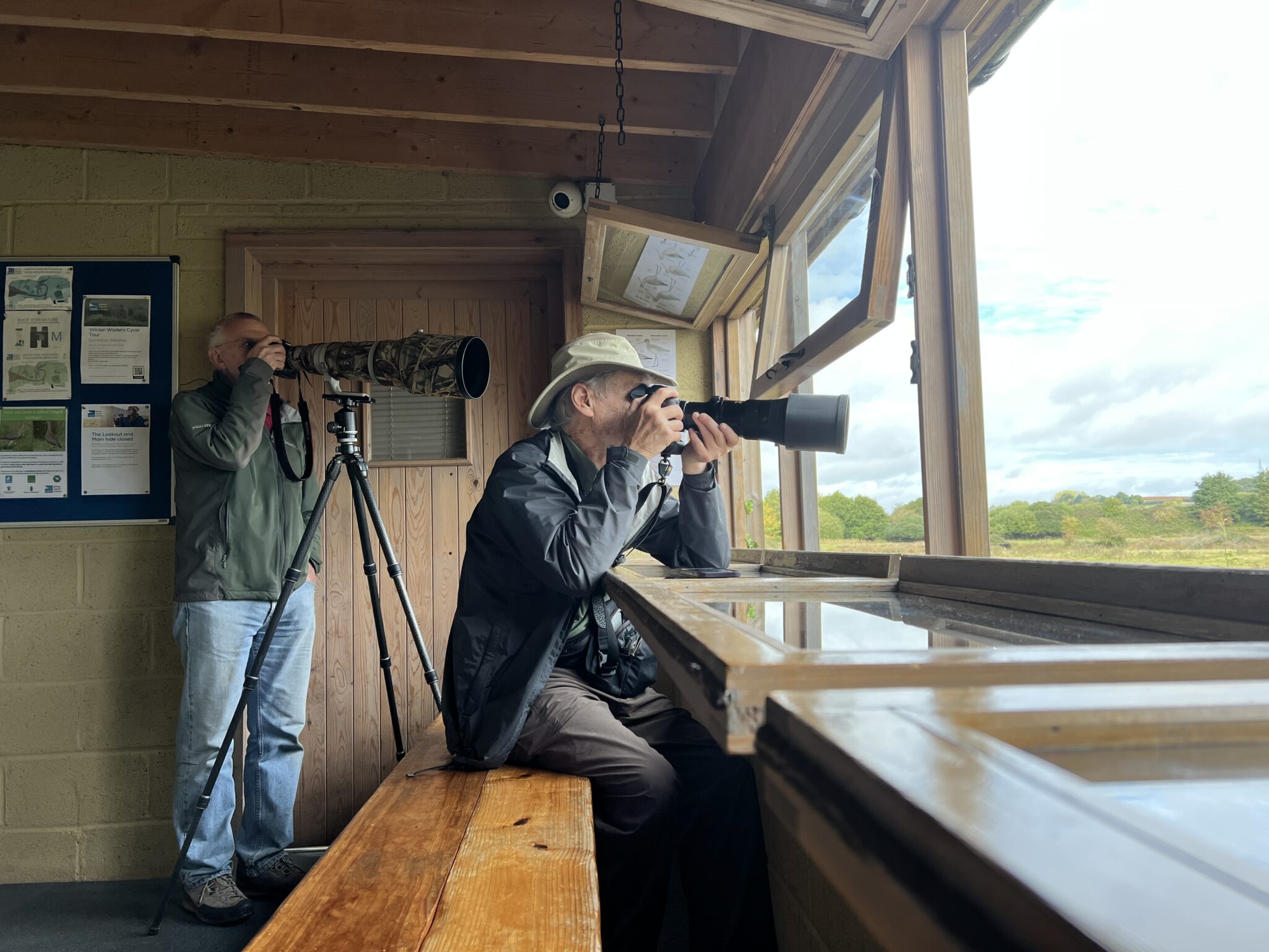
In October 2022, I visited the United Kingdom for the first time in over thirty years and this was the first time I have visited specifically to photograph the birds that occur there. With my guide Steve Huggins, I photographed many species that call the UK home at the various locations we visited. Over the period of two weeks, we traveled to the counties of Norfolk, Powys, Gloucestershire, Worcestershire, Devon, and Dorset. One bird that teased me throughout the trip was the Eurasian Sparrowhawk, we observed the species a number of times but the views were mostly brief or too far away. Often the sightings were of them dashing through the trees on the prowl hunting for other species of bird, the sparrowhawk would be gone before I could ever lift the camera to my eye.
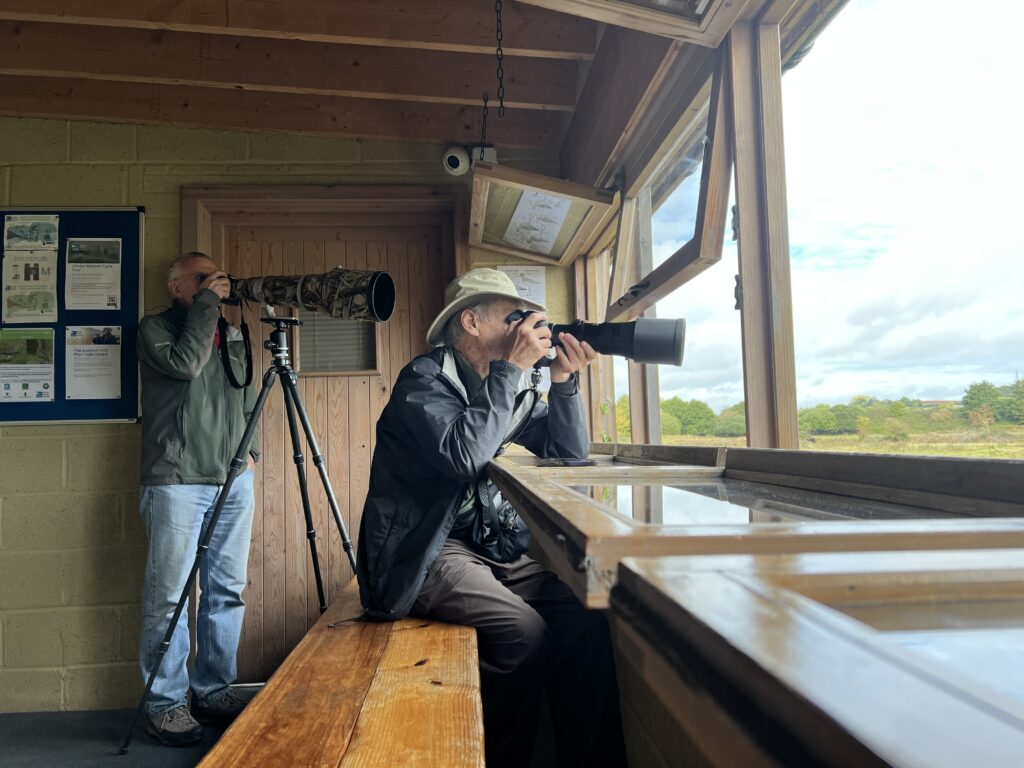
The Eurasian Sparrowhawk is a member of the bird family known as Accipiters. It is a family that has fifty-one species throughout the world, most are known as Goshawks or Sparrowhawks. Readers from North America may be familiar with the Sharp-shinned Hawk or Cooper’s hawk, both of which are members of the accipiter family. Characteristically accipiters are slender with long tails and short stocky wings, designed for maneuverability in tight spaces such as in dense woodland where they hunt and ambush their prey sometimes in tight areas. Often they have long legs that enable them to chase their prey sometimes by running on the ground. Female accipiters are generally much larger than the male, the Eurasian Sparrowhawk female is 14-16 inches long with a wingspan of 26-31 inches compared to the male which is 11-13 inches long and a wingspan of 23-25 inches.
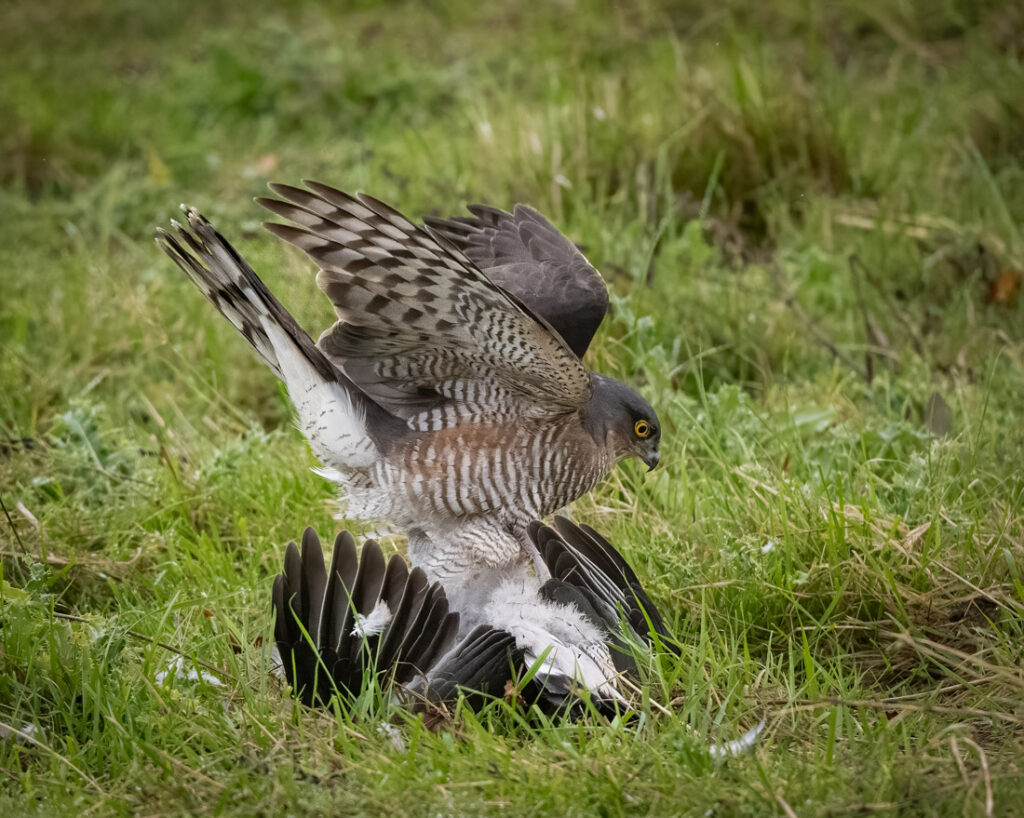
As its name suggests the Eurasian Sparrowhawk is present throughout Europe and Asia and has an estimated world population of 1 million birds, the population in the United Kingdom is estimated at approximately 40,000 birds. Like the majority of hawks and eagles, sparrowhawks suffered a massive population decline in the 1950s and 60s. This was due to organochlorine chemicals that were used to treat crops that would become prevalent in the food chain resulting in highly concentrated levels in predators. The high concentrations often led to direct death or would cause eggs to become fragile and would break during incubation. In the UK, in areas such as East Anglia where the chemicals were widely used due to intensive crop farming the Eurasian Sparrowhawk almost became extinct, in other areas in the west or north where little crop farming occurred there was little or no decline in the species. When the chemicals were banned populations rebounded. Northern populations will migrate south during winter months, whereas those in warmer clines are sedentary.
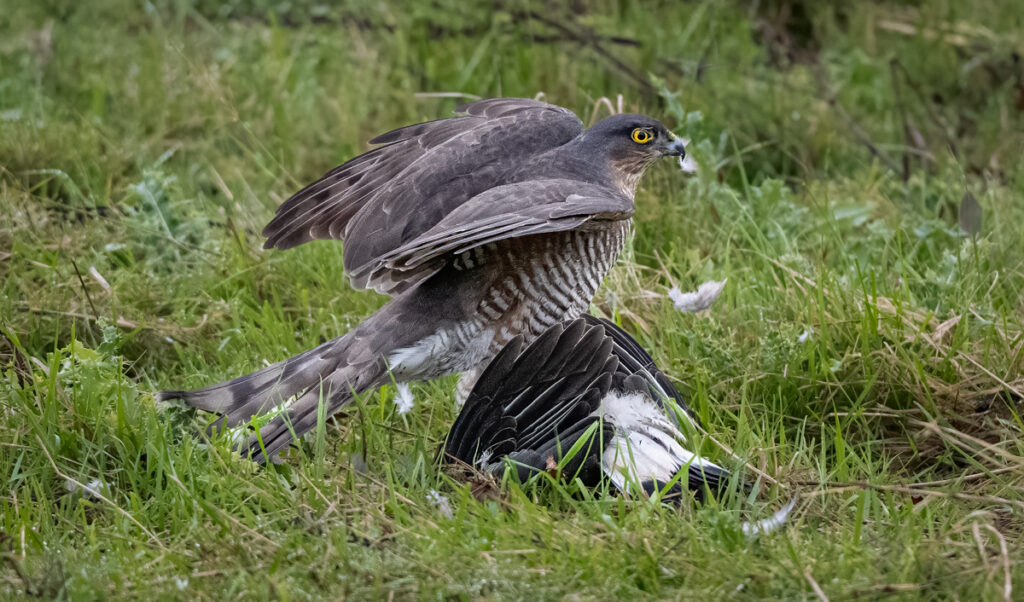
On the penultimate day of the trip, my luck was in and the sparrowhawk finally decided to put on a show! We had enjoyed the morning at Dawlish Warren Nature Reserve on the western shore of the Axe Estuary in Devon before the heavens opened up forcing us on a hasty retreat to the car. With the rain pouring we made our way towards Bowling Green RSPB (Royal Society for the Protection of Birds) Nature Reserve on the opposite side of the estuary. Arriving in the early afternoon, the rain subsided and eventually, the sun poked through the clouds again. Bowling Green Marsh is located at the confluence of the River Clyst and River Axe and the best viewing is from the amazing new hide on Bowling Green Road. The hide provides viewing opportunities from the comfort of dry benches and ample windows that are fully open, it is accessible to all and has a ramp to provide access to those with disability. We enjoyed the hide so much that we spent over four hours in it photographing the birds that dropped into the closer areas of the marsh.
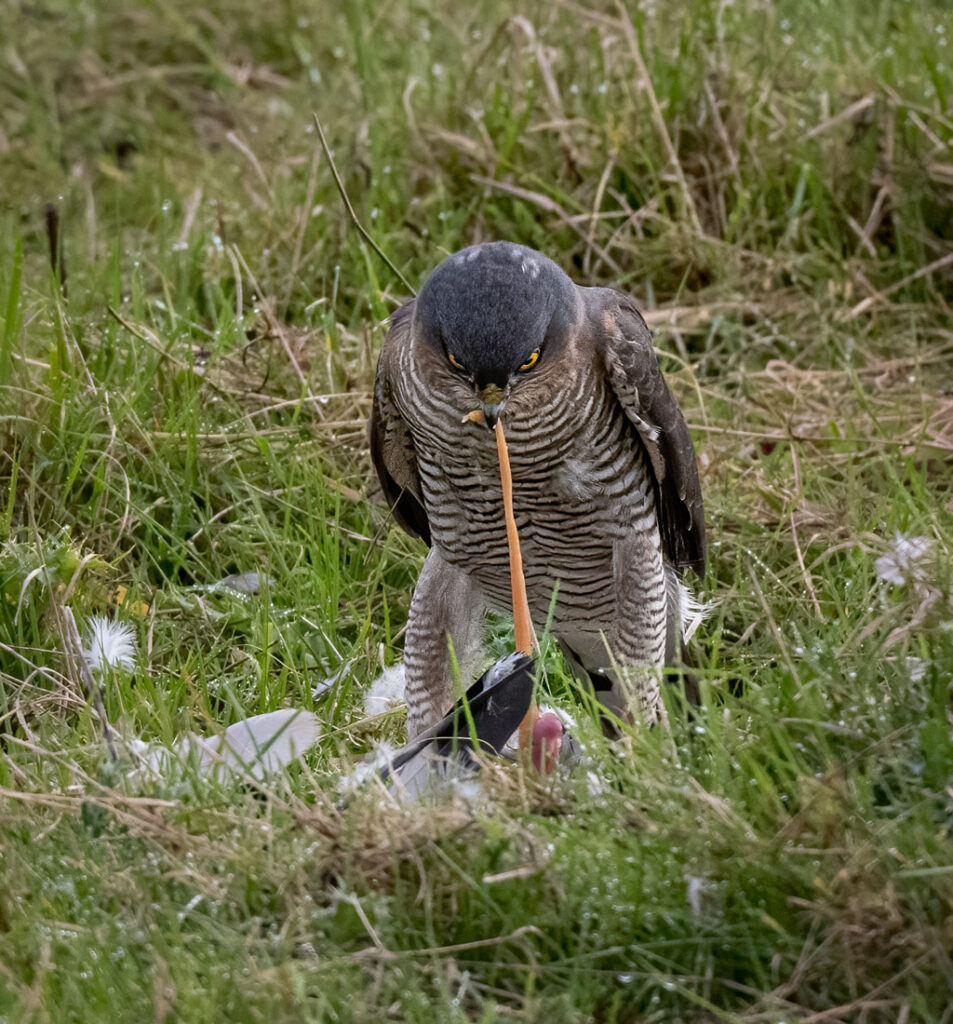
So back to that sparrowhawk! Steve had dropped me off at the hide while he drove back to find a place to park the car. In the hide there were four other people enjoying the birds and I found a place on a bench to setup and begin taking photographs of the hundreds of waterfowl and shorebirds nearby. After about two minutes, I noticed a Common Wood-pigeon fly in to the nearest pool to take a drink. As another wood-pigeon flew in towards the pool a smaller, faster bird appeared and within seconds smashed into the wood-pigeon and knocked it to the ground. It was a male Eurasian Sparrowhawk, it clamped its sharp claws around the the pigeons neck and although the much larger pigeon struggled and fought for life it was no match to the hawk and after a few minutes it gave up. As the wood-pigeon is larger and heavier than the hawk it could not carry it away to eat. The hawk began to enjoy its mid-afternoon meal and we watched and photographed the hawk plucking the pigeons feathers and enjoying the ample meal for the next 45 minutes or so. While most of the other birds on the reserve carried on and ignored the sparrowhawk there was one group of birds that did notice the commotion – a family group of Eurasian Magpies. The magpies arrived within a minute and spent the whole time trying to distract the hawk and steal some of the prey, the hawk would not budge however and the magpies eventually settled down and hung around within a few feet and waited for their chance. When the hawk had finished its meal it flew off leaving the remains of the pigeon, within seconds the magpies rushed in to finish off the scraps.
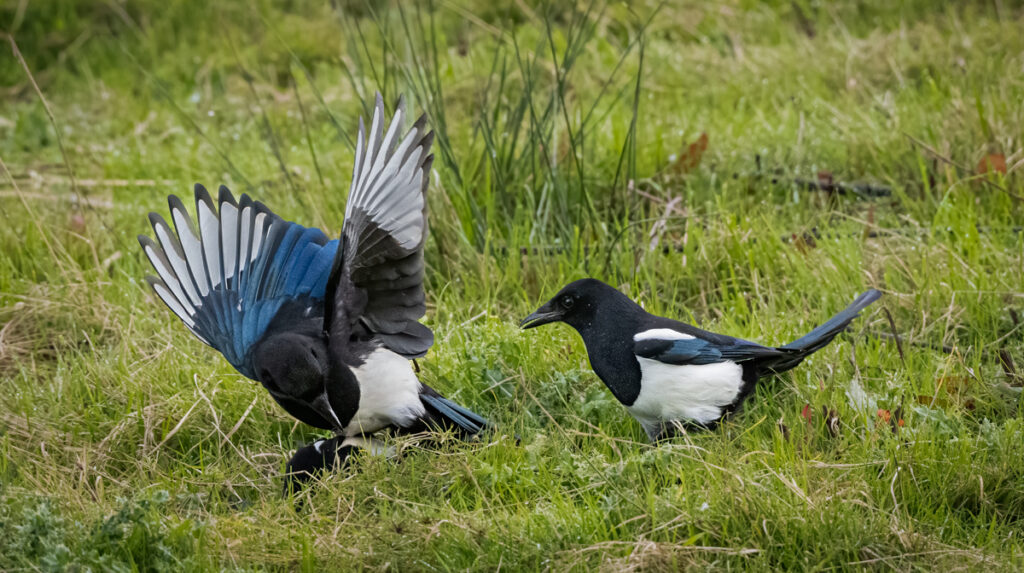
I took hundreds of photographs of the scene and it was a very difficult choice for which photos to keep versus which to delete. I hope you enjoy the photographs of one of natures daily struggles. The hunter versus the hunted!
View more photographs of the Eurasian Sparrowhawks and Common Wood-Pigeon along with many other species photographed in the United Kingdom.


